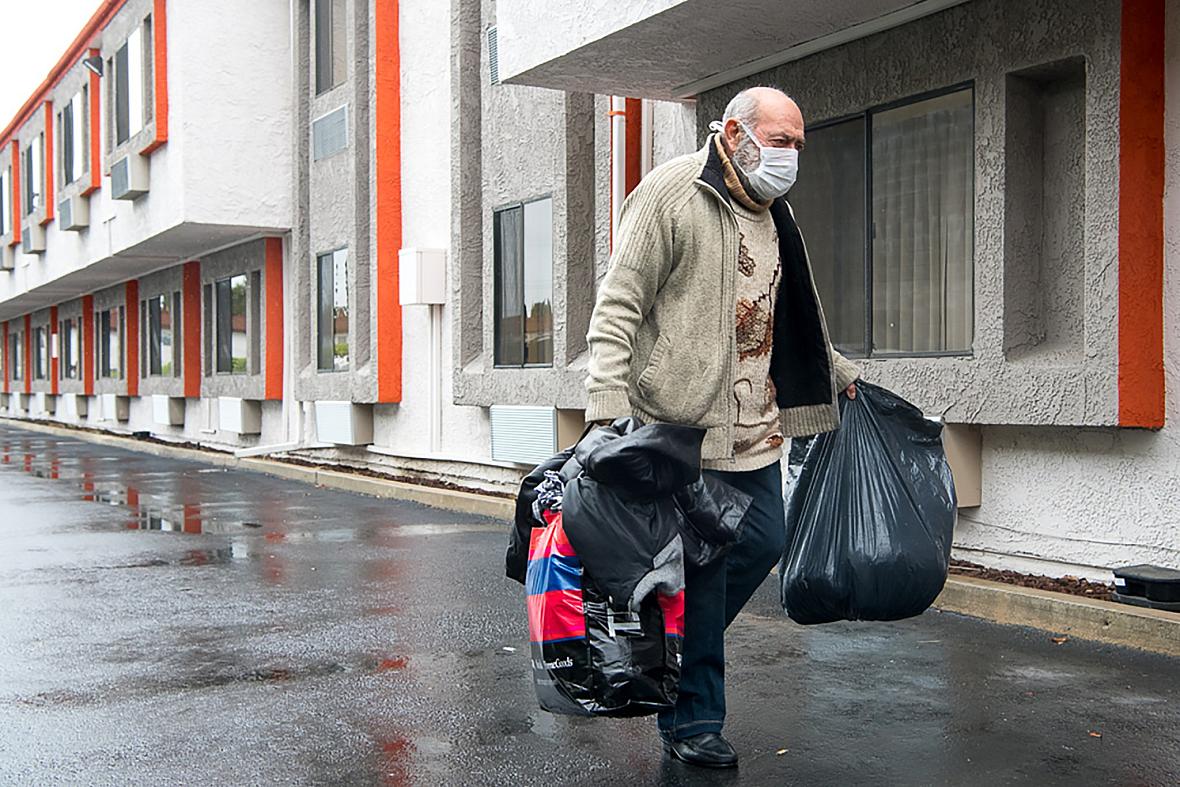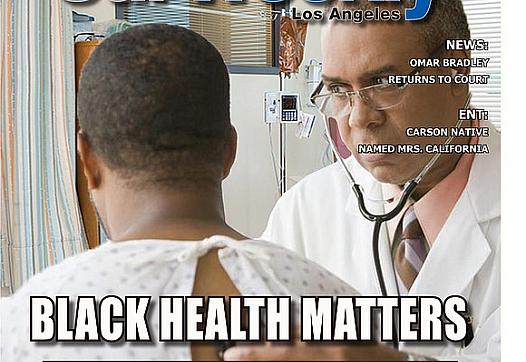Homeless find navigating streets more complicated
This story was originally published in Our Weekly with support from the 2022 California Fellowship.

Our Weekly
“Marion” once again packed up his belongings and moved his tent across the street for a few hours during another “sanitation sweep” when the homeless encampment of about 30 people was temporarily dismantled.
Crews showed up to wash and sandblast the sidewalk. They also disposed of trash. On occasion during these sweeps, with the assistance of the LA Department of Water and Power, crews repaired the light poles tapped into for makeshift electricity.
“I get tired of this sh*t,” Marion said. “They come in when they want and tell people to ‘get up, move this stuff.’ I guess they have a job to do, but they and the police push us around all the time.”
It was the third time in at least six months that a team of sanitation workers were there to clean the sidewalk enough for pedestrians to walk by. It makes little difference. Less than three hours after the workers leave, most of the encampment appears again. The destitute men and women call it home. They’ve traveled up and down the thoroughfare dozens of times looking for the next place to rest.
“After a while,” Marion explained, “we pick a spot and settle down there. You get tired of walking…moving from place to place.”
The pandemic made life on the streets especially hard for the homeless. The county-wide health emergency came on the heels of an already worsening mental health and substance abuse crisis among the homeless. Apparently, during the pandemic, serious psychological distress was even more pronounced among the homeless population in South Los Angeles.
When living on the street, health coverage is basically non-existent. These men and women have no forwarding address. Many have felony convictions. A good many more are hooked on drugs.
Because substance abuse — for both the housed and unhoused — reportedly increased over the past two years, California lawmakers have tried to enact a number of policy actions to increase and standardize access to care.
One of these measures is CalAIM (California Advancing and Innovating Medi-Cal), a $6 billion initiative spread out over the next five years with provisions to address the social forces shaping mental health, housing and helping people transition in and out of incarceration.
Marion admittedly doesn’t drink or use drugs. He’s a fine musician (keyboards mostly) and is “tech-savvy” as an active computer programmer. Marion formerly owned a computer repair shop in Hollywood. He was successful with a steady clientele — enough to purchase a townhome and a Ferrari sports coupe.
Marion frequently panhandles, but he is affable and stays up-to-date on current events. He manages to maintain his hygiene as best he can, thanks to a guy across the street who learned to manipulate a fire hydrant to just the right water pressure to wash clothes. He even strung up a clothesline and, depending on the load, will provide service for a buck or two.
Like many of his neighbors, Marion suffers from mental illness, foremost of which is diagnosed bipolar disorder which he said often manifests in bouts of depression. In his case, he was hit by a car 10 years ago and, despite a “generous settlement,” set up a tent and generally doesn’t stray more than 100 yards from the scene of the accident.
“It comes out of nowhere,” he said about his condition. “One day I’m doing fine. The next day I get confused and I don’t know why. It’s frustrating.”
Ideally, CalAIM would be a logical step for persons like Marion. The program supports “crucial transitions” that include a pathway toward better mental health assessments among the homeless. The biggest challenge is getting to these persons “where they are” and offering these services to help them regain a better foothold on daily life.
Neither Marion, nor any of his nearby neighbors, are familiar with CalAIM. Yet, outreach workers from other agencies do stop by to check on them and offer assistance.
“They (LA County outreach workers) come by and tell people about clinics and people who can help, but most of these people around here don’t trust it,” Marion said. “It’s hard to get people to change their lifestyle when they’ve been that way for so long.”
One of those outreach agencies is HOPICS (Homeless Outreach Program Integrated Care System). Operating out of South Los Angeles, representatives fan out to homeless encampments each week to distribute meals, water, clothing, blankets and to offer health referrals. The result of their work can sometimes be a mixed bag.
“Some people are receptive, some are not,” said one representative while sorting through the back of his SUV loaded with foodstuff. “We’re out here every day in the community. We wish we could encourage more people to accept our services, but sometimes it’s difficult. A lot of these folks just want to be left alone.”
HOPICS has dedicated itself to assisting not only the homeless, but poverty stricken families in South Los Angeles. They assist with housing, transportation, child care and supportive services such as clothing and hygiene products.
“We offer a continuum of care for the homeless and that includes making connections with Medi-Cal,” said Erika Battaglia, HOPICS manager of community engagement and social impact. “We can make referrals to CalAIM — for those that quality — and we welcome every opportunity to help the homeless get back on their feet and have a productive life. Programs like CalAIM can help us provide these wrap-around services so desperately needed.”
Bettaglia added that, despite the noble efforts of HOPICS, “it’s squarely up to the individual to take us up on the offer.”
For the homeless, CalAIM could be of great assistance. The program seeks to pair specific Medi-Cal mental health and substance use services to expand its “peer support services” — contacts with individuals with lived experiences who can understand and intercede in the challenges of homelessness and mental illness.
Early review of CalAIM has illustrated its effectiveness in improving access to appropriate care (both institutional and out-patient) for those who need it.
CalAIM can also help to close the “revolving-door” custom of arresting and jailing the mentally ill homeless. Getting a proper diagnosis of their illness, along with a referral to regular treatment, a prescribed regimen of medications and ongoing counseling sessions could prove beneficial to not only the homeless, but for community stakeholders as well.
“CalAIM is going after the homeless in trying to address a full continuum of care,” said Jacey Cooper, California Medicaid director. “Because it is difficult for homeless persons to look after their behavioral health needs, we will have teams on the street to encourage the benefits of Medi-Cal and CalAIM to get people the health services they need. We have the ability now to accomplish that.”
For Marion and thousands of other weary and weathered wanderers like him, CalAIM could provide the launching point for recovery and wellbeing. But getting the homeless to accept help is a big challenge.
“I’ve been offered health services many times,” Marion said. “I’d rather not participate. They ask too many questions. They want to get in your business. Some folks don’t like that…they just want to be left alone.”
This article was produced as a project for the USC Annenberg Center for Health Journalism’s 2022 California Fellowship.


